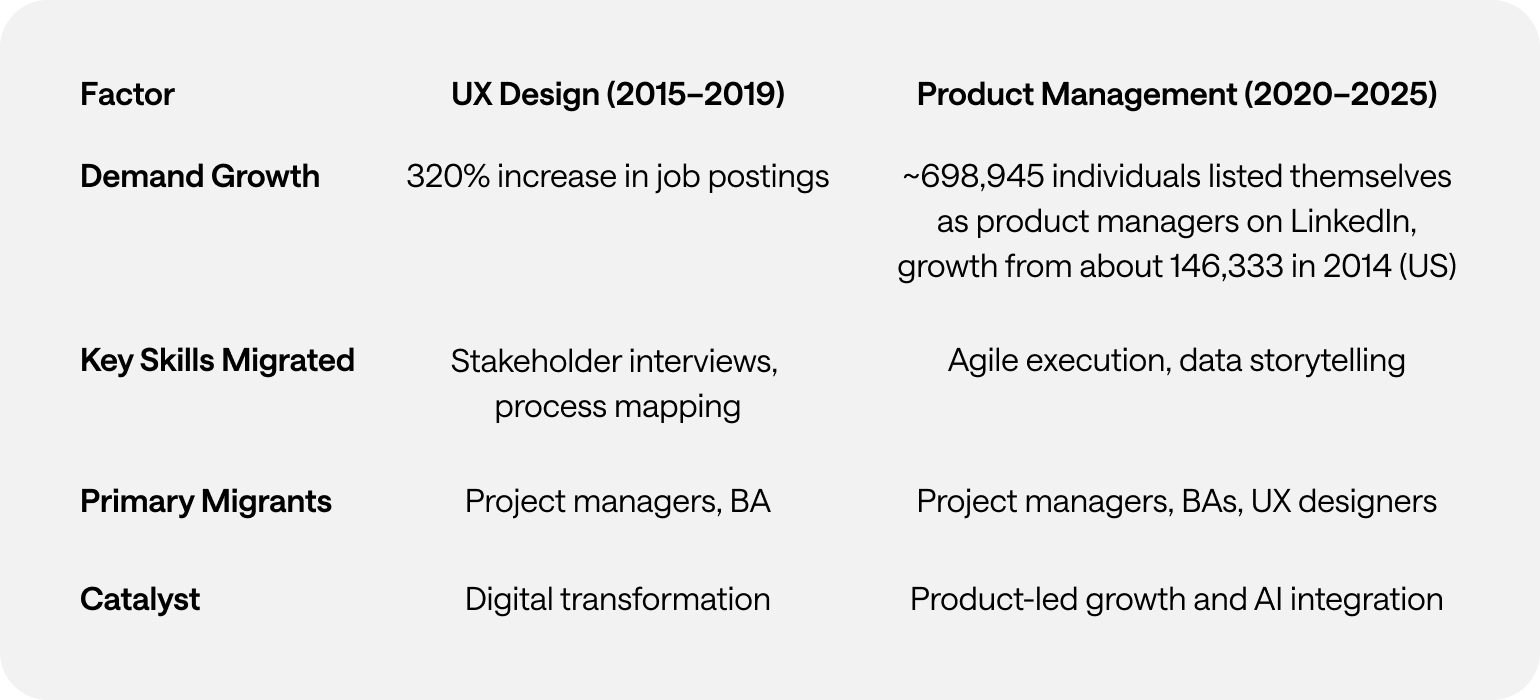AI-driven personalization is redefining digital experiences, allowing companies to tailor content, recommendations, and interfaces to individual users at an unprecedented scale. From e-commerce product suggestions to content feeds, streaming recommendations, and even customized user interfaces, personalization has become a cornerstone of modern digital strategy. The appeal is clear: research shows that effective personalization can increase engagement by 72%, boost conversion rates by up to 30%, and drive revenue growth of 10-15%.
However, the reality often falls short of these impressive statistics. Personalization can easily backfire, frustrating users instead of engaging them, creating experiences that feel invasive rather than helpful, and sometimes actively driving users away from the very content or products they might genuinely enjoy. Many organizations invest heavily in AI technology while underinvesting in understanding how these personalized experiences actually impact their users.
The Widening Gap Between Capability and Quality
The technical capability to personalize digital experiences has advanced rapidly, but the quality of these experiences hasn't always kept pace. According to a 2023 survey by Baymard Institute, 68% of users reported encountering personalization that felt "off-putting" or "frustrating" in the previous month, while only 34% could recall a personalized experience that genuinely improved their interaction with a digital product.
This disconnect stems from a fundamental misalignment: while AI excels at pattern recognition and prediction based on historical data, it often lacks the contextual understanding and nuance that make personalization truly valuable. The result? Technically sophisticated personalization regularly misses the mark on actual user needs and preferences.
The Pitfalls of AI-Driven Personalization
Many companies struggle with personalization due to several common pitfalls that undermine even the most sophisticated AI implementations:
Over-Personalization: When Helpful Becomes Restrictive
AI that assumes too much can make users feel restricted or trapped in a "filter bubble" of limited options. This phenomenon, often called "over-personalization," occurs when algorithms become too confident in their understanding of user preferences.
Signs of over-personalization include:
- Content feeds that become increasingly homogeneous over time
- Disappearing options that might interest users but don't match their history
- User frustration at being unable to discover new content or products
- Decreased engagement as experiences become predictable and stale
A study by researchers at University of Minnesota found that highly personalized news feeds led to a 23% reduction in content diversity over time, even when users actively sought varied content. This "filter bubble" effect not only limits discovery but can leave users feeling manipulated or constrained.
Incorrect Assumptions: When Data Tells the Wrong Story
AI recommendations based on incomplete or misinterpreted data can lead to irrelevant, inappropriate, or even offensive suggestions. These incorrect assumptions often stem from:
- Limited data points that don't capture the full context of user behavior
- Misinterpreting casual interest as strong preference
- Failing to distinguish between the user's behavior and actions taken on behalf of others
- Not recognizing temporary or situational needs versus ongoing preferences
These misinterpretations can range from merely annoying (continuously recommending products similar to a one-time purchase) to deeply problematic (showing weight loss ads to users with eating disorders based on their browsing history).
A particularly striking example occurred when a major retailer's algorithm began sending pregnancy-related offers to a teenage girl before her family knew she was pregnant. While technically accurate in its prediction, this incident highlights how even "correct" personalization can fail to consider the broader human context and implications.
Lack of Transparency: The Black Box Problem
Users increasingly want to understand why they're being shown specific content or recommendations. When personalization happens behind a "black box" without explanation, it can create:
- Distrust in the system and the brand behind it
- Confusion about how to influence or improve recommendations
- Feelings of being manipulated rather than assisted
- Concerns about what personal data is being used and how
Research from the Pew Research Center shows that 74% of users consider it important to know why they are seeing certain recommendations, yet only 22% of personalization systems provide clear explanations for their suggestions.
Inconsistent Experiences Across Channels
Many organizations struggle to maintain consistent personalization across different touchpoints, creating disjointed experiences:
- Product recommendations that vary wildly between web and mobile
- Personalization that doesn't account for previous customer service interactions
- Different personalization strategies across email, website, and app experiences
- Recommendations that don't adapt to the user's current context or device
This inconsistency can make personalization feel random or arbitrary rather than thoughtfully tailored to the user's needs.
Neglecting Privacy Concerns and Control
As personalization becomes more sophisticated, user concerns about privacy intensify. Key issues include:
- Collecting more data than necessary for effective personalization
- Lack of user control over what information influences their experience
- Unclear opt-out mechanisms for personalization features
- Personalization that reveals sensitive information to others
A recent study found that 79% of users want control over what personal data influences their recommendations, but only 31% felt they had adequate control in their most-used digital products.
How Product Managers Can Leverage UX Insight for Better AI Personalization
To create a personalized experience that feels natural and helpful rather than creepy or restrictive, UX teams need to validate AI-driven decisions through systematic research with real users. Rather than treating personalization as a purely technical challenge, successful organizations recognize it as a human-centered design problem that requires continuous testing and refinement.
Understanding User Mental Models Through Card Sorting & Tree Testing
Card sorting and tree testing help structure content in a way that aligns with users' expectations and mental models, creating a foundation for personalization that feels intuitive rather than imposed:
- Open and Closed Card Sorting – Helps understand how different user segments naturally categorize content, products, or features, providing a baseline for personalization strategies
- Tree Testing – Validates whether personalized navigation structures work for different user types and contexts
- Hybrid Approaches – Combining card sorting with interviews to understand not just how users categorize items, but why they do so
Case Study: A financial services company used card sorting with different customer segments to discover distinct mental models for organizing financial products. Rather than creating a one-size-fits-all personalization system, they developed segment-specific personalization frameworks that aligned with these different mental models, resulting in a 28% increase in product discovery and application rates.
Validating Interaction Patterns Through First-Click Testing
First-click testing ensures users interact with personalized experiences as intended across different contexts and scenarios:
- Testing how users respond to personalized elements vs. standard content
- Evaluating whether personalization cues (like "Recommended for you") influence click behavior
- Comparing how different user segments respond to the same personalization approaches
- Identifying potential confusion points in personalized interfaces
Research by the Nielsen Norman Group found that getting the first click right increases the overall task success rate by 87%. For personalized experiences, this is even more critical, as users may abandon a site entirely if early personalized recommendations seem irrelevant or confusing.
Gathering Qualitative Insights Through User Interviews & Usability Testing
Direct observation and conversation with users provides critical context for personalization strategies:
- Moderated Usability Testing – Reveals how users react to personalized elements in real-time
- Think-Aloud Protocols – Help understand users' expectations and reactions to personalization
- Longitudinal Studies – Track how perceptions of personalization change over time and repeated use
- Contextual Inquiry – Observes how personalization fits into users' broader goals and environments
These qualitative approaches help answer critical questions like:
- When does personalization feel helpful versus intrusive?
- What level of explanation do users want for recommendations?
- How do different user segments react to similar personalization strategies?
- What control do users expect over their personalized experience?
Measuring Sentiment Through Surveys & User Feedback
Systematic feedback collection helps gauge users' comfort levels with AI-driven recommendations:
- Targeted Microsurveys – Quick pulse checks after personalized interactions
- Preference Centers – Direct input mechanisms for refining personalization
- Satisfaction Tracking – Monitoring how personalization affects overall satisfaction metrics
- Feature-Specific Feedback – Gathering input on specific personalization features
A streaming service discovered through targeted surveys that users were significantly more satisfied with content recommendations when they could see a clear explanation of why items were suggested (e.g., "Because you watched X"). Implementing these explanations increased content exploration by 34% and reduced account cancellations by 8%.
A/B Testing Personalization Approaches
Experimental validation ensures personalization actually improves key metrics:
- Testing different levels of personalization intensity
- Comparing explicit versus implicit personalization methods
- Evaluating various approaches to explaining recommendations
- Measuring the impact of personalization on both short and long-term engagement
Importantly, A/B testing should look beyond immediate conversion metrics to consider longer-term impacts on user satisfaction, trust, and retention.
Building a User-Centered Personalization Strategy That Works
To implement personalization that truly enhances user experience, organizations should follow these research-backed principles:
1. Start with User Needs, Not Technical Capabilities
The most effective personalization addresses genuine user needs rather than showcasing algorithmic sophistication:
- Identify specific pain points that personalization could solve
- Understand which aspects of your product would benefit most from personalization
- Determine where users already expect or desire personalized experiences
- Recognize which elements should remain consistent for all users
2. Implement Transparent Personalization
Users increasingly expect to understand and control how their experiences are personalized:
- Clearly communicate what aspects of the experience are personalized
- Explain the primary factors influencing recommendations
- Provide simple mechanisms for users to adjust or reset their personalization
- Consider making personalization opt-in for sensitive domains
3. Design for Serendipity and Discovery
Effective personalization balances predictability with discovery:
- Deliberately introduce variety into recommendations
- Include "exploration" categories alongside highly targeted suggestions
- Monitor and prevent increasing homogeneity in personalized feeds over time
- Allow users to easily branch out beyond their established patterns
4. Apply Progressive Personalization
Rather than immediately implementing highly tailored experiences, consider a gradual approach:
- Begin with light personalization based on explicit user choices
- Gradually introduce more sophisticated personalization as users engage
- Calibrate personalization depth based on relationship strength and context
- Adjust personalization based on user feedback and behavior
5. Establish Continuous Feedback Loops
Personalization should never be "set and forget":
- Implement regular evaluation cycles for personalization effectiveness
- Create easy feedback mechanisms for users to rate recommendations
- Monitor for signs of over-personalization or filter bubbles
- Regularly test personalization assumptions with diverse user groups
The Future of Personalization: Human-Centered AI
As AI capabilities continue to advance, the companies that will succeed with personalization won't necessarily be those with the most sophisticated algorithms, but those who best integrate human understanding into their approach. The future of personalization lies in creating systems that:
- Learn from qualitative human feedback, not just behavioral data
- Respect the nuance and complexity of human preferences
- Maintain transparency in how personalization works
- Empower users with appropriate control
- Balance algorithm-driven efficiency with human-centered design principles
AI should learn from real people, not just data. UX research ensures that personalization enhances, rather than alienates, users by bringing human insight to algorithmic decisions.
By combining the pattern-recognition power of AI with the contextual understanding provided by UX research, organizations can create personalized experiences that feel less like surveillance and more like genuine understanding: experiences that don't just predict what users might click, but truly respond to what they need and value.



.png)


